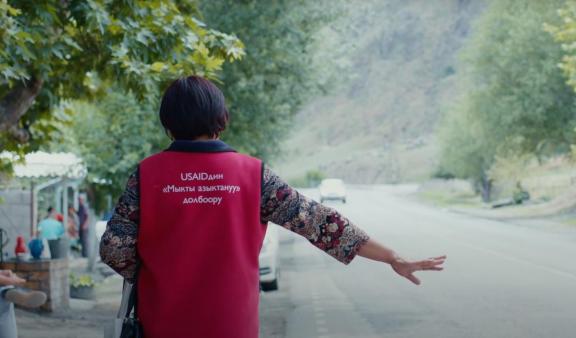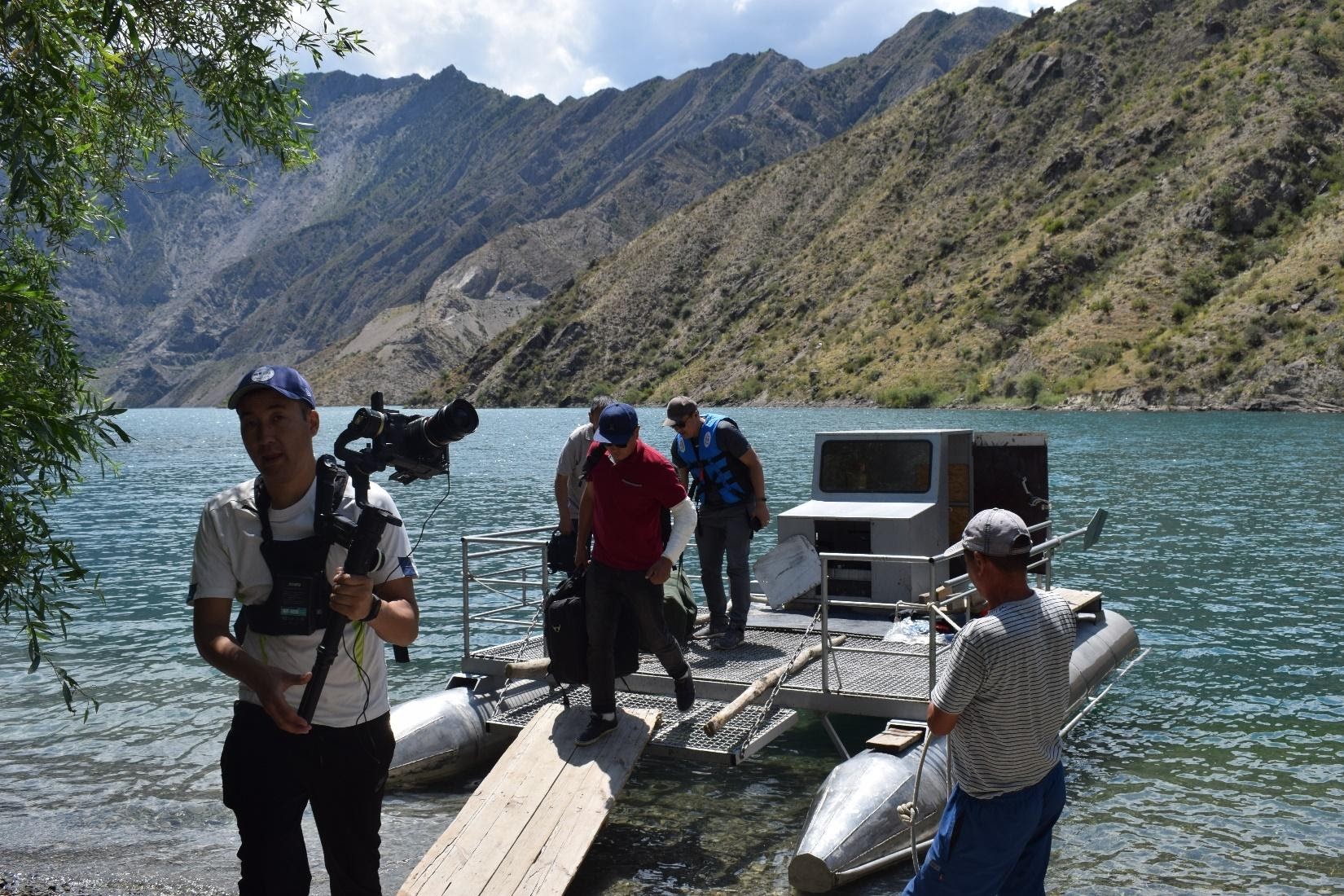
In July 2021, USAID Advancing Nutrition produced a short film about former medical worker Zhumakan Kaldarova, who joined USAID Advancing Nutrition as an activist last year. Kaldarova works with several villages in Aksy Rayon. One of them is Kyzyl-Beyit, a remote village of fewer than 300 residents located 2,000 meters above sea level.
In Kyzyl-Beyit, the internet is very limited. The village is only accessible through two routes that are both dangerous and lengthy: one is through a narrow mountainous climb that takes over two hours by car, and the other goes across the Naryn river with a historically treacherous boat crossing. Zhumakan Kaldarova has made this journey for over 32 years, first as a medical worker and then as a project activist. She routinely visits families with children, consults parents and other guardians on healthy nutrition and breastfeeding practices, and distributes the project’s handouts to villagers.

USAID Advancing Nutrition staff members interviewed Kaldarova online, before making the trek to the mountain village with a film crew carrying cameras on their backs. After two days of filming, the crew had the footage they needed to document Kaldarova’s work. The short film is now available in English, Kyrgyz, and Russian.
USAID Advancing Nutrition is entering its third year of operation in the Kyrgyz Republic. Despite operating mostly online due to COVID-19, the project has engaged 3,000 activists like Zhumakan Kaldarova, 1,000 medical workers, and over 50,000 individuals with its key nutrition messages over two years. Since its inception, the project in the Kyrgyz Republic has shared success stories and best practices locally through hundreds of posts on social media, exhibitions, TV programs, and film festivals.